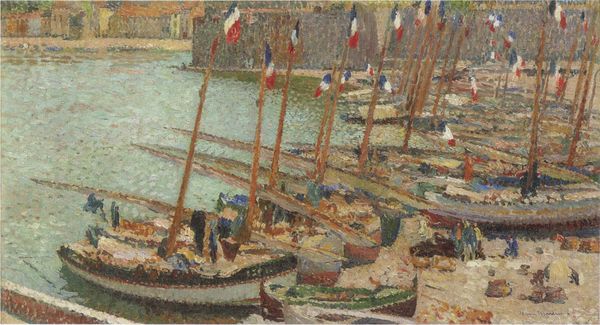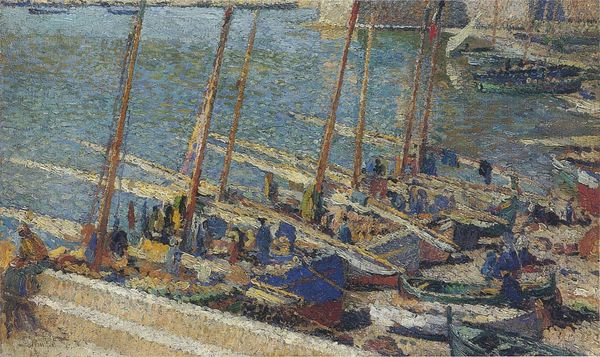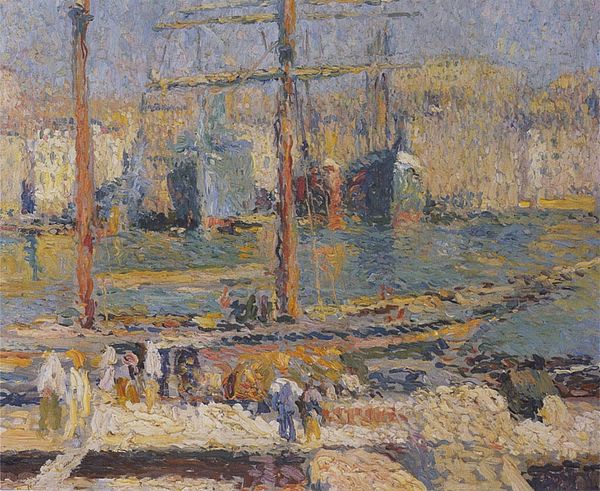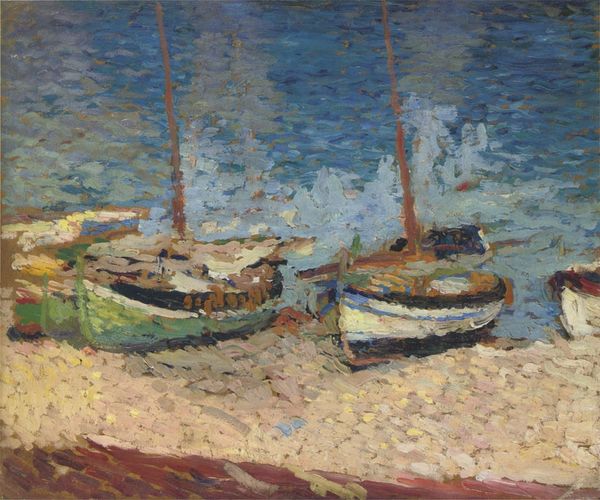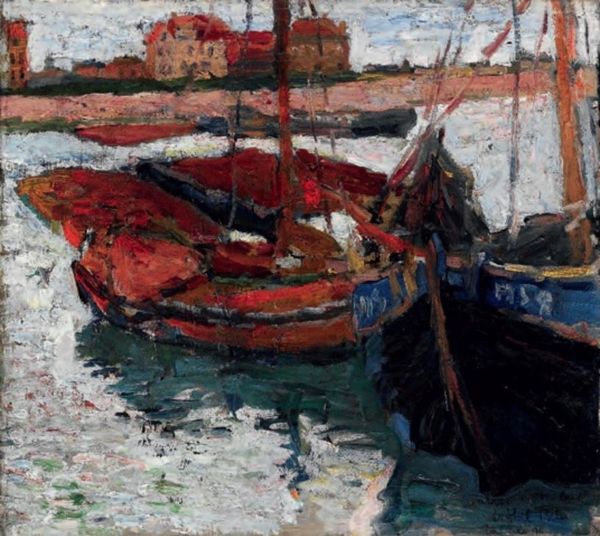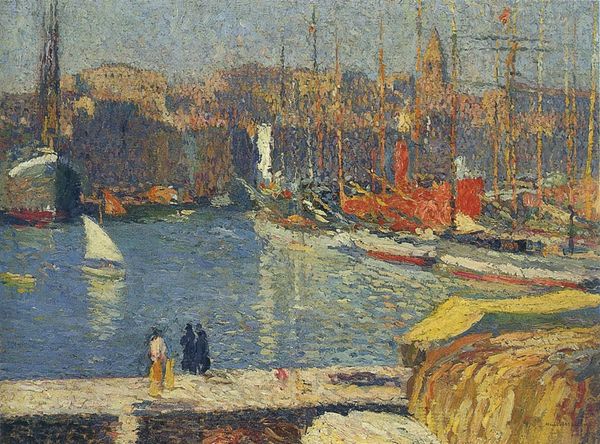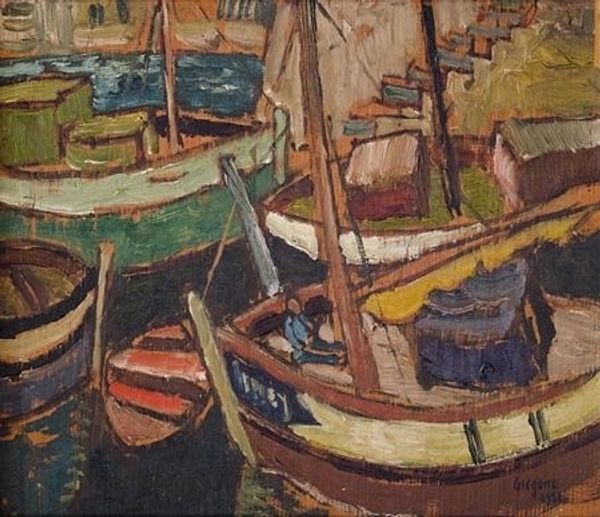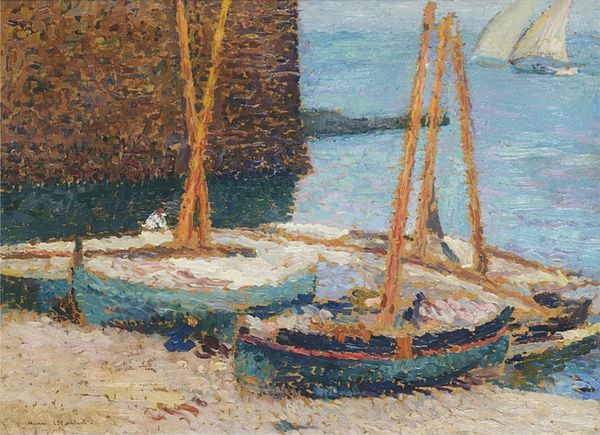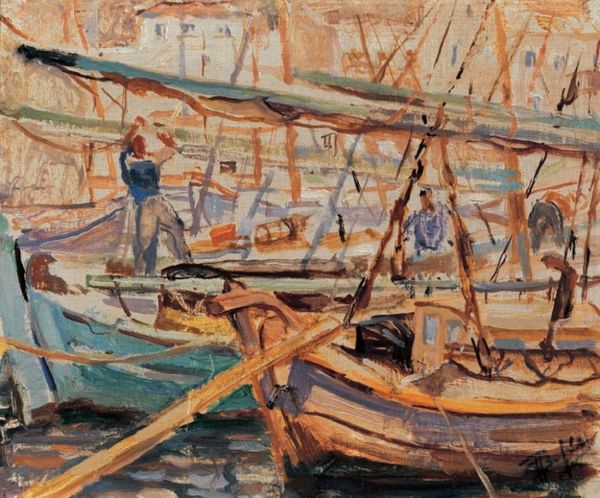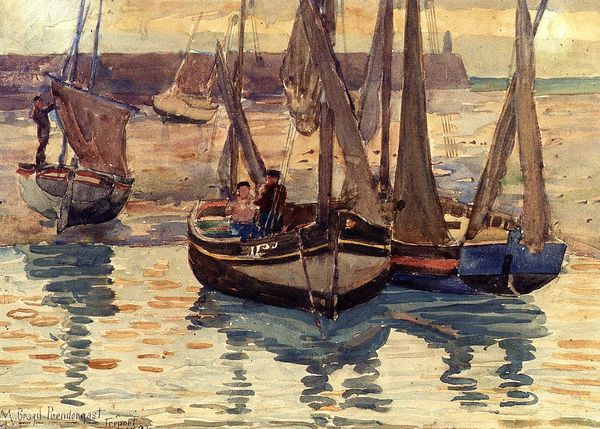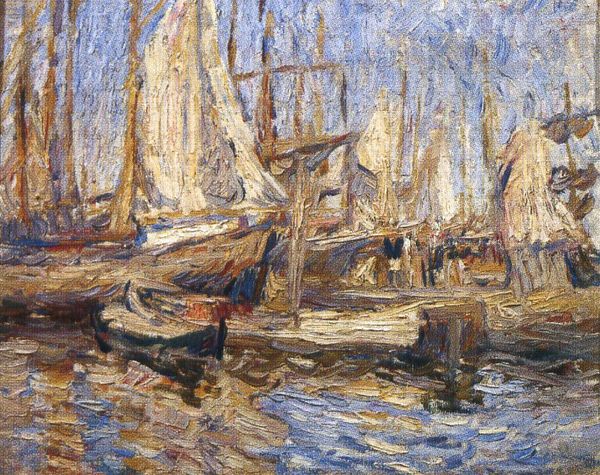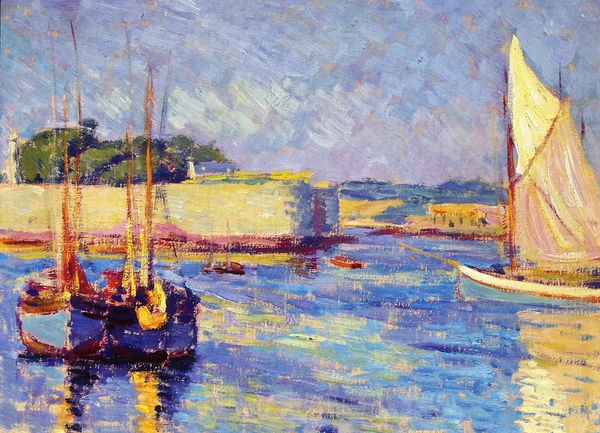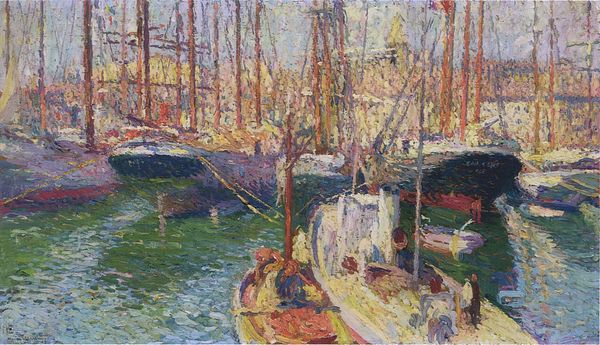
plein-air, oil-paint, impasto
#
plein-air
#
oil-paint
#
landscape
#
oil painting
#
impasto
#
post-impressionism
Copyright: Public domain
Curator: This artwork is a post-impressionist painting of boats, a landscape called "Boats in Port Collioure", painted in oil using the impasto technique and plein-air by Henri Martin. What's your first impression of this image? Editor: It feels dense, textured—almost like looking at a pointillist tapestry woven with strokes of light. The calmness is so deceiving because up close, there is so much movement. I'd expect an almost Impressionistic visual rendering of serenity on the French Riviera to give way to the kind of leisure time for elites, removed from the global order that enables such calm for some at the cost of the same for others. Curator: Interesting take, because for me, it whispers of lazy afternoons. The light is inviting, the colors soft—it gives a feeling of gentle warmth and evokes a mood of stillness. Though now you say tapestry, that reminds me how tactile it looks because the brushstrokes are thick. Almost like the paint wants to detach itself from the canvas. I imagine standing right there on the quay, feeling the sun on my face. Editor: And while the scene oozes calm, don't forget these harbors would have been spaces of arrival and departure, ports into an early world dependent on maritime infrastructure that moved goods and colonial actors and instruments of early, globalized political violence around the world. It is interesting to see pleasure uncoupled from that context... Even if the artist had no intention of engaging those tensions, it seems irresponsible for viewers not to ask those questions. Curator: I suppose every idyllic landscape can be challenged in those terms, but do you find it productive to engage it in that light? Looking at art in our moment runs that risk... the further risk that we overwrite intention and meaning, which seems important, if not essential, to accessing a painter's purpose. If every moment can be seen with modern judgment... What is to separate us from the moment depicted on the canvas? What is the viewer's ethical burden in all this? Editor: That’s a real dilemma! Maybe it's about balancing historical context with the pure, visual, perhaps more sentimental pleasure of looking. To understand that pleasure might not be "innocent" but still holds value, maybe even a complex, difficult one. It is not about judgment, but responsibility. A duty to ask "at what cost this scene?" Curator: Well, now when I see "Boats in Port Collioure", it won't just be sailboats on a sunny day anymore. Thanks for altering my impression. Editor: Likewise. Let's just say that, if this painting is to survive another century of viewing, its survival must depend on us seeing more than it intended us to see.
Comments
No comments
Be the first to comment and join the conversation on the ultimate creative platform.
